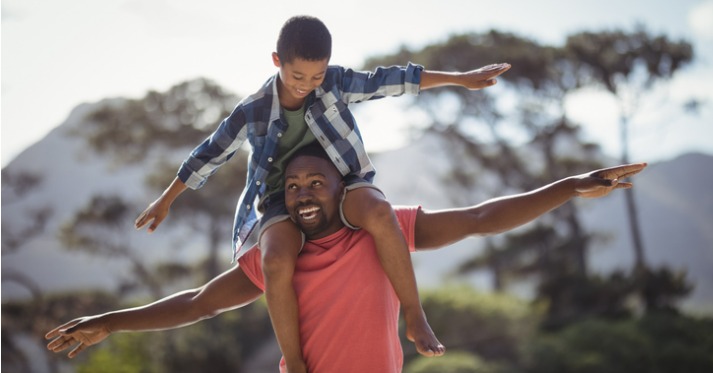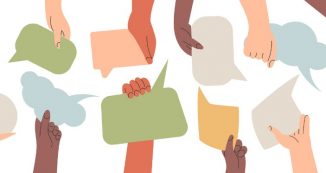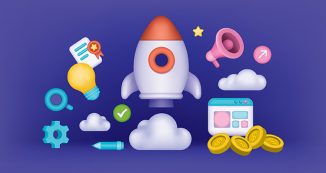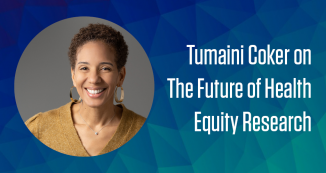
04 Sep ITHS Pilot Funds Support Culturally Diverse Autism Services
The ITHS profile series is meant to shine a deserving spotlight on individuals or programs within ITHS doing critical work across the vast spectrum of translational research. This September, we are focusing on work supported by ITHS Pilot Funds.
Shana Attar and Hannah Benevidez are clinical psychology graduate students working on autism research under their advisor, Dr. Wendy Stone. They received an ITHS academic-community partnership pilot award to work with Mother Africa, a local non-profit organization founded in King County to aid African refugee and immigrant women and their families. The focus of their research was to find new ways to help culturally diverse families better access autism support services.
We recently spoke with Shana and Hannah to learn more about how their ITHS Academic Community Partnership pilot award helped them with this project, “Co-Developing and Piloting Culturally-Responsive Informational Materials about Autism for Families of Young Children: Employing a Train-the-Trainer Implementation Model within a Nonprofit Setting.”
Can you tell us a little about your research focus?
Shana Attar: The problem is that early identification of autism is really key to optimize long term wellbeing for children and their families. Autism is associated with lifelong challenges and social communication. There’s increased economic burden. There’s a lot of parental stress, and we know that there are health inequities in throughout the lifetime of an of a person with autism from culturally and linguistically diverse families. So, for example, the standard screenings don’t work as well on children from diverse families. Children from diverse families are half as likely to be referred as white children. They’re far less likely to receive or use services. So even just within those early years, where it’s really critical to be connected to supports, there are drastic health inequities, and we really wanted to figure out a way that we can capitalize on Mother Africa’s existing relationships with these culturally diverse communities to help them enter and access these support systems.
We consider two main problems. The first problem is that the materials that exist to help families are not culturally sensitive. They are developed for white families who have specific relationships with health systems and specific ideas of health, literacy and different educations and different pasts. So there wasn’t material to use to support these culturally diverse families.
And then the second problem that we saw was that a lot of families that Mother Africa works with are unable to access a lot of medical centers. A lot of the specialized autism knowledge is housed in tertiary centers that require referrals and a lot of knowledge for how to navigate this American system that was very foreign to many families.
So we wanted to create a route for getting this information and getting connected to services that was more appropriate and easily accessible to Mother Africa’s families. And in order to do that, we worked on two things. The first was creating these educational materials that could be used to identify the families which most needed to be connected to services, and then to actually help those families enter and move through this process of getting evaluated and getting services.
What drew you to this research?
SA: I was really interested in autism identification for a long time, primarily due to the known benefits that early identification has and the ways that it really improves the lives of children and families. And then the Cultural sensitivity piece. I think I was drawn to it from two directions. The first was Hannah and I both started graduate school sort of at the time of this renewed attention to health inequities, and systemic inequities like George Floyd, and all of that was in our first year of graduate school. As we were starting to develop our research interests and my family, my father is a refugee from the Middle East. So I’m also have a personal interest in supporting marginalized communities in the United States.
Hannah Benavidez: My research, I guess more specifically, has been about early identification, but in early support settings. So those early intervention providers and mine focus a lot more on how we communicate about autism to families, how we explain autism and how we talk about autism for a child. And I’m very interested in the caregiver perspective. So, how families understand about the possibility of autism and what they do with that information, and how we can better support their journey from concerns to early support for autism. That’s generally where my specific work has gone, and it intersected nicely with this project that we collaborated on.
What were your roles on the project?
SA: I had done a previous project with Mother Africa where I was trying to develop a culturally sensitive autism screener. As part of that project, I developed a really strong relationship with Mother Africa, and as it was winding down, their program supervisors and the families came to me and said that they were really happy to participate in the screening project, but screening alone is really insufficient to provide the necessary care that their families and communities need. And then we discussed future directions that Mother Africa would really like to be able to help their caregivers with. So, as a result of those conversations, we looked for academic community partnership grants and found this ITHS grant, which seemed like a really perfect fit for our needs. So, together with Mother Africa, and with the advice of our advisor, Dr. Wendy Stone, we conceptualized the project and made initial plans for its design, and then Hannah and I wrote the grant and oversaw the execution of the project.
HB: I was looped in because we are in the same lab, and I had a vested interest in supporting caregivers, and a big part of this project was going to be supporting families. Shana asked if I wanted to be involved, and I said, Yes, and then we’ve been working on it together ever since.
What kind of impact have you seen since the program started?
HB: At Mother Africa, they have lay providers, meaning they don’t have specific backgrounds or expertise in child development or autism, but we knew they had some knowledge because they do autism screening there. But I feel like we’ve seen an expansion of that knowledge and a development of their skills in helping families identify different concerns and then connect the families with local support. So we’ve seen the family support providers blossom in their knowledge.
SA: We developed a 40-page workbook through this project that we call the Family Care Project. We co-designed it with Mother Africa service providers and family members, to understand what they most wanted to see and what would be most helpful for them. We translated it into six languages and designed it so it looks nice and pretty. We thought really carefully in terms of how we wanted to deliver the information in this workbook and what should be included. So that’s the first aspect.
Hannah and I also developed a web-based training for the Mother Africa providers. We talked about specific skills the providers could use when working with the families, such as validation, problem solving, etc, and that training is open source. Anybody can use it, and Mother Africa has access to it always. It’s independently paced and very brief.
So we both created this material and this training program, and we’ve haven’t fully analyzed the data, but we’ve heard from the Mother Africa program supervisors that almost every week are hearing stories of families being connected to services that they hadn’t previously known about or been connected to.
What are your professional goals related to your research?
SA: I hope to be a professor at a university conducting similar research.
HB: I really love research, but I also really love clinical work. I appreciate the intersection of the two, and how applied research directly impacts the people we are doing the research with and for, so I hope in the future I’m able to have an intersection of the research I do that is also the clinical work that I do.
Can you tell us how ITHS was a catalyst for this project?
SA: We would not have been able to conduct this project without ITHS. From the earliest stages discussing this project, we felt more comfortable moving ahead with our academic-community partnership just by knowing that this grant mechanism existed. The award itself provided us with the resources to conduct the study across our site and Mother Africa. The generous award helped pay our time and Mother Africa’s time in a way that promoted equity for a true partnership that ultimately benefitted all stages of our research.
Finally, what is the most important thing you want people to know about your research?
HB: Broadly, I think the idea of creating additional entry points with nonprofit organizations for families from underserved or marginalized communities for supports and services is something that is very rarely done, and it can be leveraged in a way that works for a lot of causes. I think that’s also a big part of the ITHS academic community partnership philosophy and ideal. That’s one of the biggest things both Shana and I have talked about, the importance of Mother Africa having this kind of capacity because it’s hopefully sustainable in the longer term as well.
SA: Yeah, I guess I have a really similar answer, but it’s also kind of ITHS’s slogan [Accelerating research. Improving health.] I think my main takeaway would really be that multilingual community based research is not only possible, but also directly improves the research results and the outcomes and the ways that the solutions will be implemented in the community, and we’re just one case example of that.
This interview was edited and condensed for clarity.
The ITHS website is your source for information about translational research resources in the WWAMI region. Find us on Facebook, X, and LinkedIn. Sign up for our newsletter, “The Research Connector,” here!







